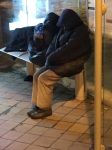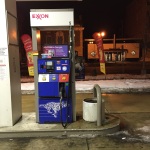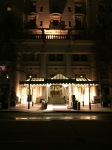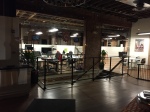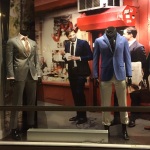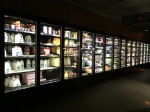I felt like it was a true honor to work with A Wider Circle for the final project. The organization does fantastic things, and you couldn’t find a more passionate leader in the world than Mark Bergel. Having Mark come speak to us initially pre-production worked really well. Mark was very motivating and did a very good job of explaining the severity of the poverty issue along with how organizations and people can help combat it. I also thought it was great being able to meet with Mark a second time in a small group to discuss issues related to our final projects.
Initially, my role was to be part of a three-person team that went to the warehouse and shot photographs. The photographs were both for other students to use in their projects and for us to then transform into a ten photograph photo series. However, unfortunately, it was my first time using the type of camera I rented from the AU media center and I wasn’t happy with the overall quality of the pictures I took. A few photos did turn out okay and one student was able to use one of my photos in her project.
I wanted to deliver something to the client that was of use and I felt as though I could do a better job coming up with an idea for a flyer campaign than by reshooting pictures at their warehouse. I spent a fair bit of time thinking about the sociological and psychological aspects of a campaign that could differentiate it from other flyer campaigns. In the end, I think I came up with the beginning stages of a campaign idea that utilizes some unique sociological principles.
For the campaign I used Photoshop to create the flyer. It was my first time using Photoshop, so it took a fair bit of time for me to create something that a more experienced person could have created more quickly. I also wrote a page to go along with my flyer and help explain how the campaign is intended to work. Given that it was my first time using Photoshop I thought my original flyer was a decent start.
After the client viewed my original flyer they made some suggestions as to how I could improve it with some language and small formatting changes. They were good suggestions and I think they make the campaign and the flyer stronger. I added some language to the flyer to make the campaign feel like it was going deeper than just a competition to collect signatures. I also changed the text so it doesn’t go across the entire page. I got rid of the back of the flyer and moved the A Wider Circle logo to the front of the page.
Unfortunately, the photograph I used in the original flyer was taken from the Internet and was therefore not high enough quality to use in the final version. The photo I used in the final version is meant to be a placeholder for now. Even though it’s a good photograph of two volunteers passing along furniture, I still think it would be better to use a picture of students passing along a flyer for the final product. Also, I think that removing the background completely and just using the image of the two people passing the flyer, as I did in my first flyer, looks better than just having a regular photograph.
Overall, I think my final flyer looks okay. I think the alignment of the text now that it is in columns look nice. As well, the official logo jpg that I used from our class files had the writing too close to the edges of the photo. This is something I wouldn’t have noticed before I took this class. So I drew a white rectangle box behind the jpg and it looks better than without it. The blue, white and grey colors used in the flyer go with the blue, white and grey colors of A Wider Circle’s website. The colors of the background of the flyer also nicely match the colors of the C’s in the wider circle logo used at the top of the flyer. Also, even though it is just a place holder, the blue tones in the photo work well with the rest of the colors in the flyer.
I can’t say enough about the support Professor Llerena gave me throughout the process, including meeting with me several times in office hours to discuss my ideas. I came into this class deathly afraid of anything to do with visual literacy. I waited until my very last year of college to take this course, which is a requirement for my degree. While I still feel like I have a long way to go, I feel like I definitely have the beginning tools needed to create and evaluate visual media.



